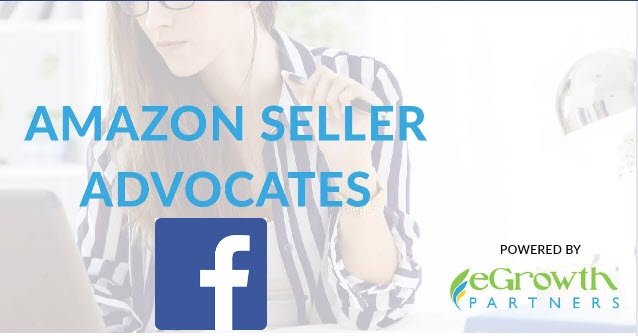This week I answer questions that we’ve gotten from sellers over the past few weeks on a variety of Amazon topics.
Q. Is Amazon suspending listings that don’t have GS1 UPC codes?
Yes. They’ve told us for a long time that this was coming and once they integrated with the GS1 registry, it was only a matter of time. Sellers who are trying to use non-GS1 UPC codes for new listings are getting messages that the UPC code and brand do not match, so they are not able to create that listing. You MUST use GS1 at this point.
Q. Is Amazon going to grandfather all those old listings with non-GS1 UPC codes?
Ha! You are really funny. No, they aren’t. Like all things Amazon, they are rolling this out. With hundreds of millions of ASINs on the platform it will take a while to get to everyone, but the algorithm is working away 24/7. It’s just a matter of time before you have to deal with this. The best thing to do is to take care of it now before Amazon takes your listings down.
Q. I have a lot of non-GS1 UPC codes on my bundles/brands. How can I fix this before my listings are suspended?
This is a multiple-choice answer:
- Are you the brand owner? You can work with the Brand Registry team. They will tell you to delete the old listing, create a new listing with the GS1 UPC code and then tell them and they will merge the reviews to your new listing. Obviously, the pictures, descriptions, etc. need to all be the same. I suggest using a flat file to delete and add the new listing. It makes it easier to make sure that the listing is exactly the same except for the GS1. You can request an “All Listings + Category” report from Amazon through the case log. The huge ugly flat file (feed file, upload file – they’re all the same thing) will have ALL your active listings. You can cut out all the listings that are OK and just work with the ones that need changes.
- Is this a bundle that you created but you are not listed as the brand owner on the product or your brand is not in Brand Registry? This is tougher because the UPC code will go to some random company in the GS1 Registry. If you have a lot of bundles but they are not branded? You will probably lose them at some point. I’ve mentioned this in past blogs, but if you are serious about your bundles, you should consider having a brand and packaging for them like “Cynthia’s Amazing Edibles” or “Kreative Kitchen Kutlery.” Some sellers get an exemption instead. This is a strategic business decision that you need to make. If you get an exemption, just realize that anyone can list on your bundle. You have no protections. You are also vulnerable to inauthentic and infringement complaints from the brands.
- Is this a bundle that someone else created? If you are selling on someone else’s listing, just be aware that it may be taken down in the future. You can’t add a GS1 UPC code unless it is tied to the brand/manufacturer that Amazon thinks owns the product. If that’s not you, then you can’t fix it. The brand owner/manufacturer has to do it. A fair number of our clients manage brand registry for a number of brands. You will need to work with your brands to do this.
Q. Should I fix my UPC codes now or wait until after Q4?
I don’t know. If you are already having problems creating new listings, then you need to deal with it now, obviously. If you’re not, then it’s up to you. It’s a risk. Just so you know that. The bots work 24/7.
Q. What are the common mistakes that sellers make when transitioning to GS1 UPC codes?
The biggest mistakes are: 1) not paying attention to details and 2) not being brand registered first. The biggest detail that is missed when setting up the GS1 Registry is not having the brand name in the registry. If you have multiple brands under one corporate umbrella, make sure they are in the register OR set up GS1 Registries for each brand. Otherwise, Amazon won’t recognize it and will reject your codes.
You also should be brand registered first. I know this is a problem because the USPTO can take up to a year to get to the point where a trademark is active. Amazon has a new program where if you use one of their approved lawyers to register your trademark, they’ll let you get Brand Registered right away. It’s called the Amazon IP Accelerator program and here’s the list of vetted law firms.
Q. What about multi-packs? Do I need GS1 UPC codes?
Yes. You need to get the correct manufacturer’s GS1 UPC code for a multi-pack. You can’t just create multi-packs for other companies’ products anymore. Amazon is suspending for improper multi-packs, especially when they are added to products as a variation. See my earlier blog on Listing Madness to learn more about the troubles with variations.
Q. Why are brands suddenly being restricted?
Frozen®, Ryan’s World®, Jakk’s® and other brands are being restricted with very little notice. We suspect this is just the beginning and that there will be other restrictions between now and Black Friday. Amazon gave Frozen® sellers four hours to comply with its new restrictions. If you are buying your inventory from the brand/manufacturer or an authorized distributor, all you need to do is provide the invoices and you should be approved. Amazon is doing this because of counterfeit concerns. They want to make sure that all items are authentic ahead of the Q4 rush. If you are buying inventory retail/online arbitrage, you will likely not be approved. If you have inventory in the warehouse that needs to be returned, you need to return it the minute you get the email from Amazon. In the case of Frozen®, sellers had four hours to remove inventory from the warehouse for free. After that, they had to pay normal return fees.
Q. I’ve failed verification. Do I still have a chance to sell on the platform?
We get variations on this question every week. The confusion comes from how a seller is defining “failed.” If Amazon is still allowing you to upload documents or has asked you to provide new/different documents, you still have a chance. If they’ve given you a notice that says you can’t sell on the platform and that they may not read your future emails, you’ve failed. At this point, no one can help. This is why we strongly urge our clients to come to us before opening a new account so we can make sure their documents are in order before Amazon asks for them.
For some EU marketplaces you only get ONE chance. For the US marketplace our clients generally get at least 2 chances.
Q. If I’ve failed verification, can I simply open another account and try again?
No. Once you’ve failed you are not allowed to open another account. You get one bite at the apple, as it were. However, there are ways to try again compliantly. For example, you could create a new company or brand. New bank account, new credit card, new location, new email, new utility bill…you get the idea. And then, you need a majority partner to open it. YOU cannot open a new account. Your spouse/cousin/uncle/mother cannot open it. It has to be someone who is not linked to you by blood, marriage or close friendship. Otherwise, your accounts will be linked. You can work on the account as a limited access user/employee as long as your email is different and you never login from the IP address you were using previously.
In short, you are now tainted. They will allow you to work for another Amazon business as long as you are not the owner. I have clients that provide consulting services to Amazon businesses where they are also an investor. That seems to work. What sellers need to realize if they fail verification is that Amazon assumes they are up to no good. They are now in the category of money launderers, fraudsters and thieves in Amazon’s book.
In an article earlier this summer about the changes to Amazon’s TOS in Germany, Amazon noted that it had stopped hundreds of thousands of fraudsters from operating in Germany alone. Many of these were stopped by verification. Verification is the front line of defense for Amazon to avoid bad actors on the platform.
Sadly, most of my clients are not shady. They just are not careful enough or they have a tricky situation. For example, I have clients based in other countries where all their statements and bills are in another language so it is hard to tell what you are looking at. For those clients we have them submit English translations along with the original. I have clients who make mistakes like blacking out their account number on their bank and credit card company. These guys don’t understand that “verification” means Amazon will actually verify all the data. I know it seems obvious, but I can’t tell you how often we see that mistake.
Another mistake is not submitting a utility bill. The client doesn’t have one for the official business location, so they submit something else. That’s not allowed. In addition, Amazon asks different things of different sellers which causes confusion among sellers as to what they have to provide. They look online and one seller says, “I only needed this and this,” or “Amazon accepted my cell phone bill,” and they don’t realize that THEIR case is different. What Amazon requires varies depending on marketplace, the country where the business is located, the country where the owner(s) live, and black box Amazon algorithm stuff. For example, last year they were testing facial recognition as part of verification. Some of our clients had to allow a picture of their face and others didn’t.
Amazon doesn’t always tell you why you failed verification and sellers THINK they know why…but they are wrong. I had one client who was convinced it was the utility bill, so he kept re-submitting it. It was actually his bank statement. He was not including ALL the pages of his statement – just the first couple of pages with the statement. You may think it is crazy they want to see all the fine print, etc., but they do.
If you’d like help, give us a call.

Q. Is all this stuff you write about for real?
This is another question we get in one form or another every week. I know I have a reputation of being a “scary fairy” in the Amazon marketplace because I talk about what can go wrong. My answer is, “I really can’t make this stuff up.” Recently a fellow blogger and seller wrote in her blog about me that she thought I was being persnickety (love that word) about listing variations until it happened to her. I was glad she wrote about her experience because there is a tendency among Amazon sellers to think “I’m a good seller, it won’t happen to me.” She’s an excellent seller, but it happened to her.
From time to time I make predictions or speculate about Amazon’s motives or next moves, but I try to be clear when I’m doing that. I have a good track record of being right, but you should always take those for what they are – educated guesses. Because Amazon is so opaque, we focus on what we can observe and act from there. People will sometimes say to me, “show me where Amazon says that.” Often, I can but sometimes I can’t because Amazon doesn’t say it anywhere. I know that they are suspending sellers for that unwritten policy though, and that’s what I’m sharing.
Q. What’s the latest dirty seller tactic?
I get this question every week from sellers. Bad actors are constantly evolving their practices. Review Manipulation is a constant. Right now, bad actors are using ManyChat to solicit positive reviews. Many of them are quite brazen offering money. I went to a recent ManyChat conference where a number of people approached me to learn how to set up these ManyChat campaigns but avoid being caught by Amazon. Sigh. I told them that it was against Amazon TOS; they were taking a risk with their brand or their clients’ brands, so they all stopped immediately. Hah! “Everybody’s doing it” is what they said, and then they went to talk to someone else. I handed them my card for when their clients got caught.
This is the newest form of the PayPal/gift card tactic. Amazon has shut down many sellers who were giving PayPal gift cards in exchange for reviews. I don’t know why people think Amazon won’t catch on to the ManyChat trick. People have been turning in bad actors for quite a while who have extensive ManyChat campaigns. There’s a new tactic in town that’s causing a lot of pain – spoofed retractions. Here’s how it works. You file an infringement claim against another seller. You have no intention of retracting because they are selling cheap knock-offs or counterfeit products on your listings. A day or two later, they are reinstated on your listings. You complain to Amazon, and they tell you that YOU retracted the complaint. They don’t let you file your claim again; they take YOU down for harassment of the bad actor. At first, I thought maybe the bad actors were protected by someone inside of Amazon, but I soon realized that they had actually figured out how to spoof my clients’ emails. Amazon showed us the retractions and we were dumbfounded. My client was suspended for abusing Brand Registry, and the bad guys were laughing at us. I’ve seen this tactic several times now. It is really hard to make the case to Amazon.
HOW CAN WE HELP YOU?
We are known for helping suspended sellers get reinstated, but our goal is to keep sellers from being suspended in the first place. We have more than 25 team members passionately working 7 days a week to protect Amazon sellers like you.
As leaders in the world of Amazon compliance we’ve worked with thousands of sellers over the years. We built our own outsourced team to help sellers manage their accounts and now we are offering our unique expertise, training and management skills to you. Introducing High Touch Smiles . Find out more and schedule an appointment
Contact us for specific advice on your situation:

Email: [email protected]
Website: egrowthpartners.com
Facebook: egrowthpartners
Twitter: eGrowthPartners
Phone: 1-972-432-6398
Never miss an important update from us: Join Our Mailing List
JOIN US!
Upcoming speaking engagements and conferences for Cynthia Stine include:
Event: Feedvisor Webinar Collaboration
Topic: Amazon Black Hat Tactics: How to Protect Your Business and Prevent Suspension in Q4
Date: Thursday, November 7, 2019
Time: 11AM Pacific | 2:00PM Eastern | 7:00PM UK
Registration Landing Page
Event: Tribeworks 2.0 Small Business Conference: 1 Day Business Accelerator
When: December 10, 019 | Tuesday
Time: 9:00 AM – 5:00 PM EST
Venue: Hilton Garden Inn, Staten Island, New York
Visit Website
Register here
2020 Conferences
Event: ECF Live 2020
Date: Sun 2 February 2020 7:00PM to Wed 5 February 2020 10:00PM
Venue: The St. Anthony Hotel – San Antonio, 78205
Visit Website
Event: UnConference 2020
Date: February 27 to March 01, 2020
Location: Hilton Orlando Bonnet Creek, 14100 Bonnet Creek Resort Lane, Orlando, Florida
Event: Prosper Show 2020
Session Title: Seller Performance / Product Compliance Panel – What are the Latest Amazon Enforcement Issues We All Need to Understand
Session Date/Time: March 24, 2020 / 4:00PM
Venue: Las Vegas at the Westgate Hotel
Visit Website
OTHER NOTABLE NEWS
- Underhand businesses still tout for fake reviews on Amazon. From Tamebay: “Amazon removes a ton of fake reviews on Amazon marketplaces, but that still doesn’t appear to deter unscrupulous merchants from attempting to buy reviews to boost the popularity and ranking of their products. We’ve heard from users who are still receiving requests to buy reviews in return for free products, or rather a refund after they’ve left a review. These requests for fake reviews on Amazon often take place in hidden Facebook groups but are now being spotted as un-solicited sponsored messages. Products are being advertised with items pimped with 50% or 100% off and as soon as you click a chatbot opens offering a full refund via PayPal but only after you’ve purchased on Amazon and left a ‘good’ review”. Read the full article
- Amazon sues e-commerce ‘coaches,’ alleging they taught underhanded tactics to sellers. From GeekWire: “Amazon is accusing two California men of swindling aspiring third-party sellers with promises of learning the secrets of making a “passive income” on the tech giant’s e-commerce platform. In a new lawsuit, Amazon accuses Michael Gazzola, Matthew Behdjou and several related companies of perpetrating a scheme that includes chains of fake reviews, dishonest marketing, infringement of Amazon’s trademarks and more. Amazon has aggressively sought to stamp out fraud on its platform, and this case contains many of the elements the tech giant is trying to control”. Read the full story.
LET’S GET SOCIAL
Our Facebook Group Amazon Seller Advocates just passed 980 members! Join us for discussions of all things affecting Amazon sellers. Understand the context behind news announcements, changes to TOS and more! JOIN US!





